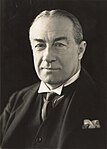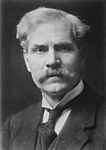
Back Všeobecné volby ve Spojeném království 1935 Czech Etholiad cyffredinol y Deyrnas Unedig yng Nghymru, 1935 Welsh Britische Unterhauswahl 1935 German Elecciones generales del Reino Unido de 1935 Spanish Élections générales britanniques de 1935 French הבחירות הכלליות בבריטניה 1935 HE Elezioni generali nel Regno Unito del 1935 Italian 1935年イギリス総選挙 Japanese 1935년 영국 총선 Korean Парламентские выборы в Великобритании (1935) Russian
| |||||||||||||||||||||||||||||||||||||||||||||||||||||||||||||||||||||||||||||||||||||||||||||||||||||
All 615 seats in the House of Commons 308 seats needed for a majority | |||||||||||||||||||||||||||||||||||||||||||||||||||||||||||||||||||||||||||||||||||||||||||||||||||||
|---|---|---|---|---|---|---|---|---|---|---|---|---|---|---|---|---|---|---|---|---|---|---|---|---|---|---|---|---|---|---|---|---|---|---|---|---|---|---|---|---|---|---|---|---|---|---|---|---|---|---|---|---|---|---|---|---|---|---|---|---|---|---|---|---|---|---|---|---|---|---|---|---|---|---|---|---|---|---|---|---|---|---|---|---|---|---|---|---|---|---|---|---|---|---|---|---|---|---|---|---|---|
| Turnout | 71.1%, | ||||||||||||||||||||||||||||||||||||||||||||||||||||||||||||||||||||||||||||||||||||||||||||||||||||
| |||||||||||||||||||||||||||||||||||||||||||||||||||||||||||||||||||||||||||||||||||||||||||||||||||||
 Colours denote the winning party—as shown in § Results | |||||||||||||||||||||||||||||||||||||||||||||||||||||||||||||||||||||||||||||||||||||||||||||||||||||
 Composition of the House of Commons after the election | |||||||||||||||||||||||||||||||||||||||||||||||||||||||||||||||||||||||||||||||||||||||||||||||||||||
| |||||||||||||||||||||||||||||||||||||||||||||||||||||||||||||||||||||||||||||||||||||||||||||||||||||
The 1935 United Kingdom general election was held on Thursday 14 November, and resulted in a large, albeit reduced, majority for the National Government now led by Stanley Baldwin of the Conservative Party. The greatest number of members, as before, were Conservatives, while the National Liberal vote held steady. The much smaller National Labour vote also held steady but the resurgence in the main Labour vote caused over a third of their MPs, including National Labour leader (and former Prime Minister) Ramsay MacDonald, to lose their seats. It was the last election in which a party or alliance won a majority of the votes cast.
Labour, under what was then regarded internally as the caretaker leadership of Clement Attlee following the resignation of George Lansbury slightly over a month before, made large gains over their very poor showing at the 1931 general election, and saw their highest share of the vote yet. They made a net gain of over a hundred seats, thus reversing much of the ground lost in 1931. The Liberals, who had split from the National Government, continued a slow political decline, with their leader, Sir Herbert Samuel, losing his seat.
The Independent Labour Party stood entirely separately from Labour for the first time since 1895, having stood candidates unendorsed by Labour at the 1931 general election and having disaffiliated fully from Labour in 1932. The Scottish National Party contested their first general election, and the Communist Party gained the West Fife seat, their first in ten years. Major election issues were stubborn unemployment and the role of the League of Nations, particularly regarding the Empire of Japan. Parliament was dissolved on 25 October.[1]
No general elections were held during the Second World War until Allied victory was assured via acts of Parliament; hence the 1935 House sat until 1945. This parliament would see two leadership changes. Neville Chamberlain took over from Stanley Baldwin as Prime Minister and Tory Leader in 1937. He in turn resigned in 1940 in favour of Winston Churchill, who led the three main parties in Parliament in government for the war.
This was the last election to be held during the reign of George V, who died two months after the election.
Cite error: There are <ref group=note> tags on this page, but the references will not show without a {{reflist|group=note}} template (see the help page).
- ^ "Parliamentary Election Timetables" (PDF) (3rd ed.). House of Commons Library. 25 March 1997. Retrieved 3 July 2022.
© MMXXIII Rich X Search. We shall prevail. All rights reserved. Rich X Search





